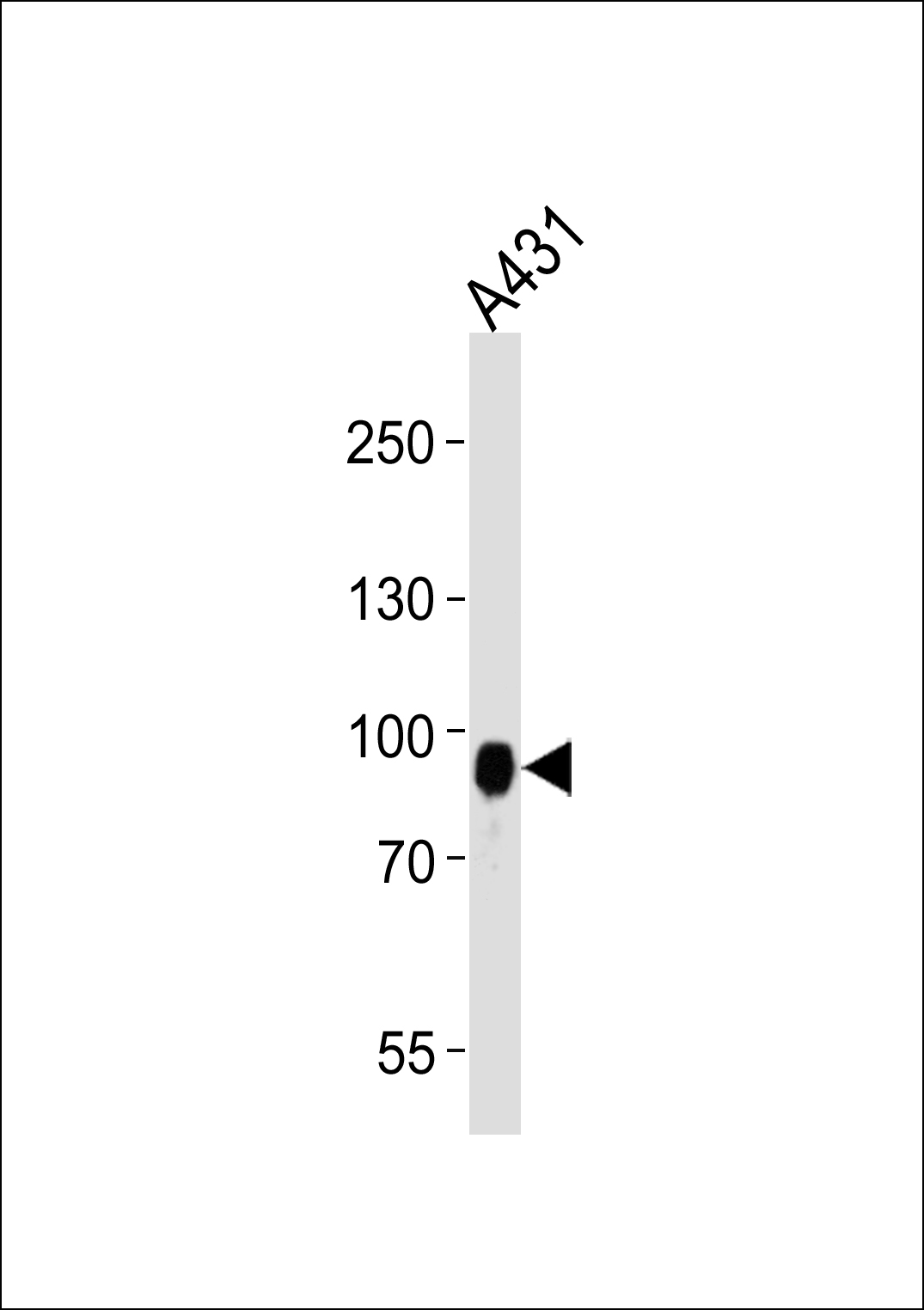DSC3 Antibody (C-term)
Affinity Purified Rabbit Polyclonal Antibody (Pab)
- SPECIFICATION
- CITATIONS
- PROTOCOLS
- BACKGROUND

Application
| WB, E |
|---|---|
| Primary Accession | Q14574 |
| Other Accession | NP_077741.2, NP_001932.2 |
| Reactivity | Human |
| Host | Rabbit |
| Clonality | Polyclonal |
| Isotype | Rabbit IgG |
| Calculated MW | 99969 Da |
| Antigen Region | 822-850 aa |
| Gene ID | 1825 |
|---|---|
| Other Names | Desmocollin-3, Cadherin family member 3, Desmocollin-4, HT-CP, DSC3, CDHF3, DSC4 |
| Target/Specificity | This DSC3 antibody is generated from rabbits immunized with a KLH conjugated synthetic peptide between 822-850 amino acids from the C-terminal region of human DSC3. |
| Dilution | WB~~1:1000 E~~Use at an assay dependent concentration. |
| Format | Purified polyclonal antibody supplied in PBS with 0.09% (W/V) sodium azide. This antibody is purified through a protein A column, followed by peptide affinity purification. |
| Storage | Maintain refrigerated at 2-8°C for up to 2 weeks. For long term storage store at -20°C in small aliquots to prevent freeze-thaw cycles. |
| Precautions | DSC3 Antibody (C-term) is for research use only and not for use in diagnostic or therapeutic procedures. |
| Name | DSC3 |
|---|---|
| Synonyms | CDHF3, DSC4 |
| Function | A component of desmosome cell-cell junctions which are required for positive regulation of cellular adhesion (By similarity). Required for cell-cell adhesion in the epidermis, as a result required for the maintenance of the dermal cohesion and the dermal barrier function (PubMed:19717567). Required for cell-cell adhesion of epithelial cell layers surrounding the telogen hair club, as a result plays an important role in telogen hair shaft anchorage (By similarity). Essential for successful completion of embryo compaction and embryo development (By similarity). |
| Cellular Location | Cell membrane; Single-pass type I membrane protein. Cell junction, desmosome {ECO:0000250|UniProtKB:P55850} Cytoplasm {ECO:0000250|UniProtKB:P55850}. Note=Expressed in the cytoplasm and at the cell membrane of oocytes {ECO:0000250|UniProtKB:P55850} |
| Tissue Location | Expressed throughout the basal and spinous layer of the epidermis with weak expression in the granular layer (at protein level) (PubMed:19717567, PubMed:7665906). Also expressed in the buccal mucosa, esophagus and cervix (at protein level) (PubMed:7665906) |

Thousands of laboratories across the world have published research that depended on the performance of antibodies from Abcepta to advance their research. Check out links to articles that cite our products in major peer-reviewed journals, organized by research category.
info@abcepta.com, and receive a free "I Love Antibodies" mug.
Provided below are standard protocols that you may find useful for product applications.
Background
The protein encoded by this gene is a calcium-dependent glycoprotein that is a member of the desmocollin subfamily of the cadherin superfamily. These desmosomal family members, along with the desmogleins, are found primarily in epithelial cells where they constitute the adhesive proteins of the desmosome cell-cell junction and are required for cell adhesion and desmosome formation. The desmosomal family members are arranged in two clusters on chromosome 18, occupying less than 650 kb combined. Alternative splicing results in two transcript variants encoding distinct isoforms.
References
Rose, J.E., et al. Mol. Med. 16 (7-8), 247-253 (2010) :
Johnatty, S.E., et al. PLoS Genet. 6 (7), E1001016 (2010) :
Spindler, V., et al. J. Biol. Chem. 284(44):30556-30564(2009)
Ayub, M., et al. Am. J. Hum. Genet. 85(4):515-520(2009)
Aoyama, Y., et al. Exp. Dermatol. 18(4):404-408(2009)
If you have used an Abcepta product and would like to share how it has performed, please click on the "Submit Review" button and provide the requested information. Our staff will examine and post your review and contact you if needed.
If you have any additional inquiries please email technical services at tech@abcepta.com.













 Foundational characteristics of cancer include proliferation, angiogenesis, migration, evasion of apoptosis, and cellular immortality. Find key markers for these cellular processes and antibodies to detect them.
Foundational characteristics of cancer include proliferation, angiogenesis, migration, evasion of apoptosis, and cellular immortality. Find key markers for these cellular processes and antibodies to detect them. The SUMOplot™ Analysis Program predicts and scores sumoylation sites in your protein. SUMOylation is a post-translational modification involved in various cellular processes, such as nuclear-cytosolic transport, transcriptional regulation, apoptosis, protein stability, response to stress, and progression through the cell cycle.
The SUMOplot™ Analysis Program predicts and scores sumoylation sites in your protein. SUMOylation is a post-translational modification involved in various cellular processes, such as nuclear-cytosolic transport, transcriptional regulation, apoptosis, protein stability, response to stress, and progression through the cell cycle. The Autophagy Receptor Motif Plotter predicts and scores autophagy receptor binding sites in your protein. Identifying proteins connected to this pathway is critical to understanding the role of autophagy in physiological as well as pathological processes such as development, differentiation, neurodegenerative diseases, stress, infection, and cancer.
The Autophagy Receptor Motif Plotter predicts and scores autophagy receptor binding sites in your protein. Identifying proteins connected to this pathway is critical to understanding the role of autophagy in physiological as well as pathological processes such as development, differentiation, neurodegenerative diseases, stress, infection, and cancer.


